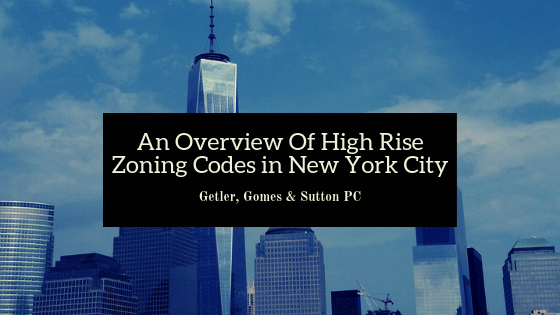Anyone who has ever been to New York City likely remembers the first saw they encountered the incredible collection of high rise buildings up close. From the city’s tallest building, One Trade World Center at 1,776 feet, to the Midtown building, 111 West 57th Street that stands at 1,428 feet, there is not a shortage of breathtaking high rise developments across the city’s five boroughs. But, what does it mean to be considered a high-rise building in today’s growing New York City?
A Quick History
The concept for high-rise buildings is not new and is what first led New York City to become the first city in the country’s history to create a city zoning code in 1916. It was created after the city’s population, and its new buildings continued to increase. While the code has been active for over 100 years, it has gone through its evolution and changes to match the changing construction industry.
In recent years, a combination of advances in technology, access to better, more efficient supplies, and an increasing need for housing has significantly driven up the height of most new building designs. As a result, a specialized type of construction called high-rise buildings and its unique zoning codes have emerged. The need for unique zoning codes emerged after more projects met new challenges with making the project compliant with safety requirements.
In the most recent update, the city defines a high-rise building as one that is greater than 75 feet from the lowest street level for fire truck access. This means that the highest point of the building cannot exceed 75 feet from the closest place that a fire truck can safely access in the case of an emergency. Like the fire truck requirement, the other zoning codes for high-rise buildings differ from standard building regulated because of safety requirements.
While safety remains the most important reason for the unique zoning laws for high-rise buildings, it is also to ensure that the comfort and needs of the city are being met as well. In 2019 alone, Business Insider reported that 16 new buildings that are all over 500 feet are expected to be completed, making the need for New York City’s high-rise code even greater.
To meet the increasingly complex zoning codes for high-rise developments, construction law firms specializing in high-rise developments have begun emerging across New York City. The need for specialized experts came to light while construction law attorney Janine Getler was working, inspiring her to help open Getler, Gomes & Sutton PC, where she remains as the Principal today. Learn more about what Getler, Gomes & Sutton PC does with high-rise development law by visiting their website at GetlerGomesSuttonPC.com.
